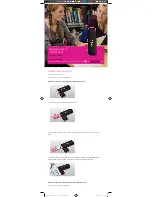
EKM-E ETHER-MON KEY DE-211
31-00160—01
34
Enabling Termination Resistor
For RS-485 EZ7 serial communications, when an electrical signal travels through two different resistance junctions in a
transmission line, the impedance mismatch will sometimes cause signal reflection. Signal reflection causes signal
distortion, which in turn will contribute to communication errors. The solution to this problem is to establish the same
impedance at the line ends as in the line itself, by terminating them with resistors.
The impedance of the termination resistor should equal the characteristic impedance of the transmission line. The
resistors should be added near the receiving side.
Honeywell E-Mon Recommends Enabling the Built-In 120
Ω
Terminator
To enable the E10039’s built-in 120
Ω
termination resistor, you must short the bottom two pins of jumper 6 (JP6), on DE-
211’s circuit board. To do this:
1.
Use a screwdriver to remove DE-211’s outer protective case, and then locate JP6, as shown in the figures below.
2.
By default, the top two pins of JP6 are shorted, which means that the built-in 120
Ω
termination resistor is disabled
(completely removing the jumper from the pins also disables the resistor).
3.
Use the jumper to short the bottom two pins of JP6 to enable the built-in 120
Ω
termination resistor.
Fig. 57.
COMPLIANCE NOTICE
Federal Communications Commission Statement
FCC - This device complies with part 15 of the FCC Rules. Operation is subject to following two conditions: (1) This device
may not cause harmful interference, and (2) This device must accept and interference received, including interference
that may cause undesired operation.
WARNING
FCC Warning
This equipment has been tested and found to comply with the limits for a Class A digital Device, pursuant to part
15 of the FCC Rules. These limits are designed to provide reasonable protection against harmful interference
when the equipment is operated in a commercial environment. This equipment generates, uses, and can radiate
radio frequency energy and, if not installed and used in accordance with the instruction manual, may cause
harmful interference to radio communications. Operations of this equipment in a residential area is likely to cause
harmful interference in which case the user will be required to correct the interference at this own expense.



































